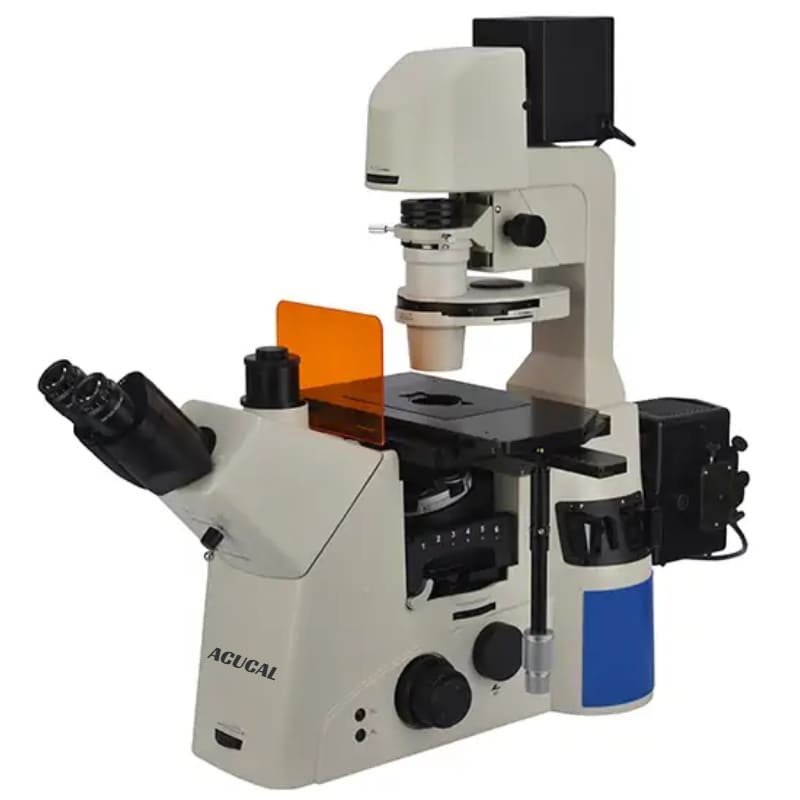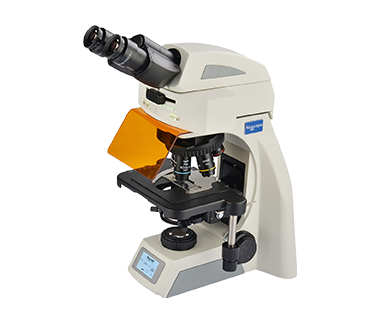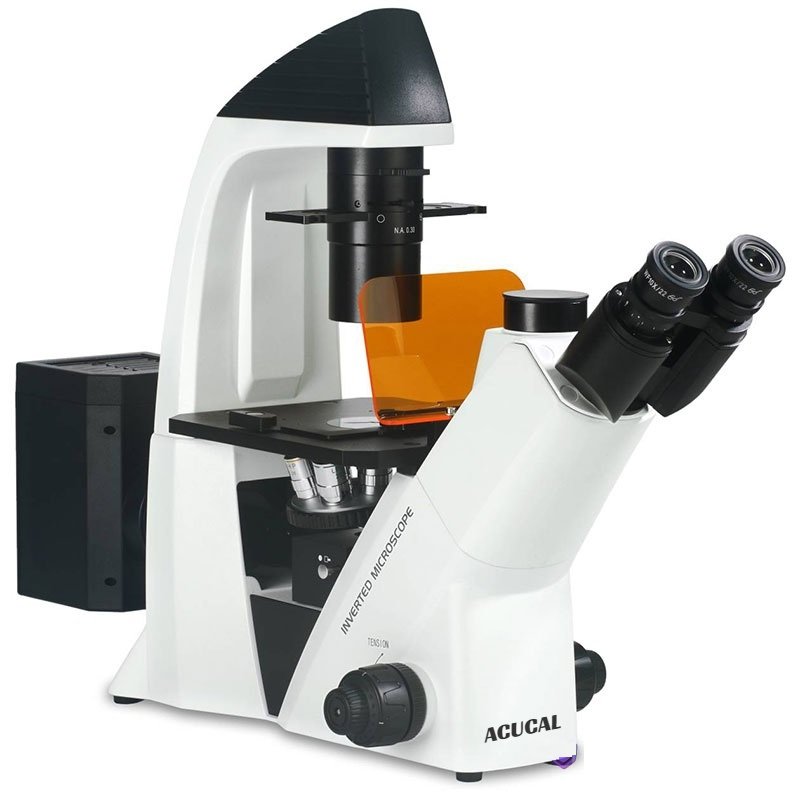ACUCAL inverted fluorescent microscope uses fluorescence to study specimens, such as living cells at the bottom of a petri dish or tissue culture. The Inverted Fluorescent Microscope has similar components to those of other microscopes, and the only difference is the arrangement of the parts, which are placed in inverted positions. The specimen is lit using a halogen lamp or LED as a light source. When light enters the microscope, it strikes a dichroic mirror, reflecting one range of wavelengths while allowing another to pass through. The ultraviolet light is reflected up to the specimen by the dichroic mirror. The UV light causes fluorescence in the specimen’s molecules and the fluorescent-wavelength light generated is collected by the objective lens.





